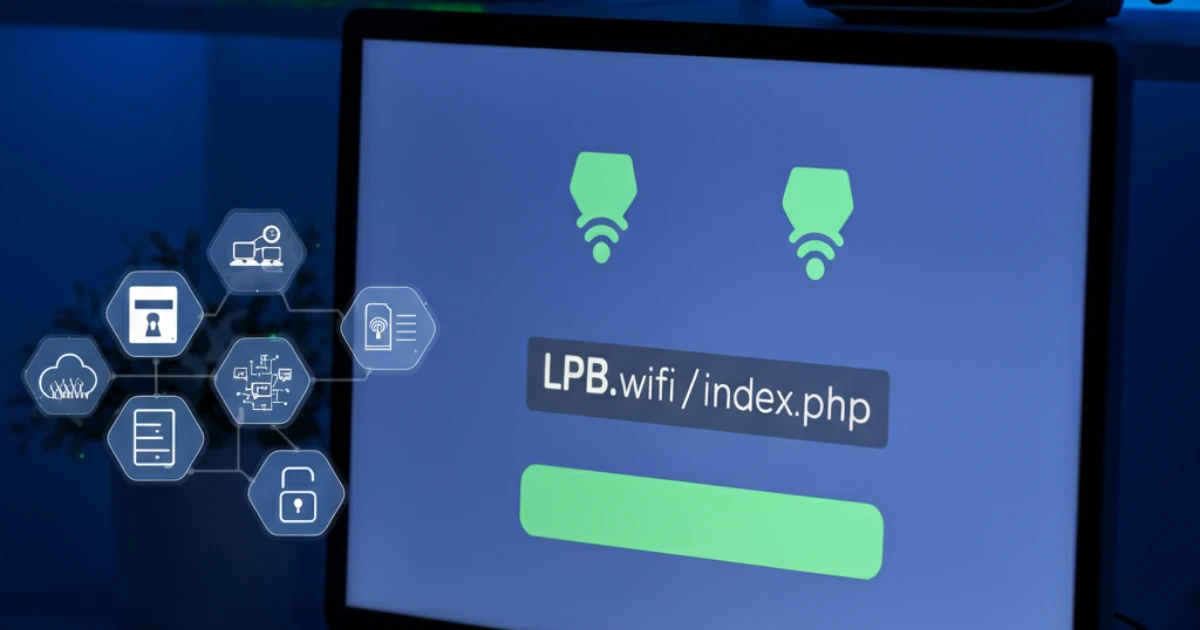Modern network setups rely heavily on routers to manage and distribute internet connectivity efficiently. For users aiming to customize their network settings, tools like lpb.wifi/index.php become critical. This page serves as a gateway to configure advanced router settings, enhance connectivity, and troubleshoot issues. But what exactly is lpb.wifi/index.php, and how can you harness its full potential? This guide breaks it all down for you.
What Is lpb.wifi/index.php?
At its core, lpb.wifi/index.php is a web-based interface often associated with managing and configuring WiFi-enabled routers. It acts as the control hub for accessing and modifying your router’s settings, from setting up network names to adjusting bandwidth controls.
For context, many routers use web applications as part of their user interface. These interfaces are typically accessed by entering a local IP address or specific URL (like lpb.wifi/index.php) into your browser. Once accessed, users are able to tweak and fine-tune parameters that impact their overall internet experience.
What Can You Do with lpb.wifi/index.php?
Using lpb.wifi/index.php, you can perform a range of tasks to improve and customize your network:
- Network Setup and Configuration: Change your WiFi name (SSID) or password, control connected devices, or configure guest networks.
- Parental Controls: Restrict access to certain websites or control the time frames during which devices can browse the internet.
- Router Performance Optimization: Adjust bandwidth allocation and prioritize certain devices or applications, such as video calls or gaming.
- Advanced Settings: Enable port forwarding, set up firewalls, or configure Dynamic DNS (DDNS) to enhance security and usability.
- Troubleshooting: Use diagnostic tools to identify and resolve connectivity issues.
Whether you’re a tech enthusiast or a casual user, lpb.wifi/index.php offers the tools you need to maximize your router’s potential.
How to Access lpb.wifi/index.php
Accessing the lpb.wifi/index.php dashboard is simple but requires a few prerequisites, such as knowing your router credentials and ensuring proper connection to your network.
Step-by-Step Instructions
- Connect to Your Router
Ensure your device (computer, tablet, or smartphone) is connected to the router’s network, either via WiFi or an Ethernet cable.
- Open a Web Browser
Launch any modern web browser, such as Chrome, Firefox, Safari, or Edge.
- Enter the URL
Type http://lpb.wifi/index.php into the address bar and press Enter. If this doesn’t work, you may need to check your router’s manual for the correct IP address or URL.
- Log In
You’ll be prompted to enter your router’s admin username and password. These defaults are usually printed on the back of the router. However, if you’ve previously changed the credentials, use the updated login information.
- Explore the Dashboard
Once logged in, you’ll gain access to all configurable features. Navigate through the menus with care to avoid unintended changes.
Common Issues While Accessing lpb.wifi/index.php
- Incorrect URL or IP Address
If the address doesn’t load, verify that you’ve entered it correctly. Some routers may use a local IP like 192.168.1.1 instead.
- Connection Problems
Ensure your device is connected to the router’s network and that your internet connection is functional.
- Forgotten Credentials
If you can’t recall your username or password, try resetting your router to factory settings.
Troubleshooting Common Issues with lpb.wifi/index.php
Managing a router dashboard isn’t always smooth sailing. Here are some of the most common hurdles users face and solutions to overcome them:
Forgotten Login Credentials
Reset your router to factory settings by pressing and holding the reset button (usually located at the back) for 10–30 seconds. Then, use the default admin credentials.
URL Not Loading
Double-check the address (e.g., http://lpb.wifi/index.php). If it still doesn’t work, try a generic IP like 192.168.0.1 or consult your router’s manual.
Connection Timeouts
Ensure that your router is powered on, connected to your device, and properly functioning. Restarting the router often resolves timeout issues.
Security Considerations When Using lpb.wifi/index.php
Given its robust capabilities, ensuring security while using lpb.wifi/index.php is critical to avoid unauthorized access to your network. Here are a few tips to secure your router:
- Change Default Passwords
Replace the default admin credentials immediately after logging in for the first time.
- Enable WPA3 Encryption
Ensure your WiFi network is secured with the latest encryption standard, such as WPA3, to protect data transmission.
- Regular Firmware Updates
Keep your router firmware up to date to address security vulnerabilities.
- Disable Remote Access
Turn off remote management unless you absolutely need it. This limits access to lpb.wifi/index.php to devices connected to your network.
- Monitor Connected Devices
Periodically review all devices connected to your network and block any unfamiliar ones.
Enhance Your Network with lpb.wifi/index.php
Understanding and utilizing lpb.wifi/index.php empowers you to take full control of your home or office network. From setting up parental controls to optimizing bandwidth, this dashboard offers comprehensive tools for an efficient and secure internet experience.
By following the tips outlined above, you’re just a few steps away from becoming a router configuration pro. Don’t stop here—we encourage you to explore advanced settings and fine-tune your network to match your exact needs.


